



When you have successfully completed this section, you will have mastered the following:
There’s no doubt that, of all the systems on a typi- cal vehicle, the lights and wiring are among the most subject to wear and tear. Operating in harsh weather conditions, open to a variety of damaging environ- ments such as loading docks and yards, and subject to vandalism, a significant amount of repair time and effort is often required. This chapter will introduce you to some of the most common problems associ- ated with lighting systems and review some of the basic tools and procedures to prepare for installation, troubleshooting and repairs.

The E.A.T. Principle
The three factors that take the biggest "bite" out of truck wiring and lighting are Environmental factors, Abuse and Time.
The “E. A.T.” principle
Three of the most often cited factors in vehicle light and wiring damage are:
Those factors are the same ones at work on the electrical systems of buildings. Both systems, when inspected and maintained regularly, last longer and have fewer problems. The environment that any wiring lives in is critical to its proper performance and durability. In buildings, because they are contained in the walls, there is more protection for wire and cable, especially where conduit is used.
But both systems are vulnerable to abuse. For instance, wiring is designed to carry a specified electrical load. Increasing the load beyond the designed tolerance of the wire can lead to increased heat and the possibility of fire. Time is another factor that affects wiring. Even the best building systems are subject to degradation over time. But it’s worse with vehicle wiring because vehicles tend to operate in harsher environments.
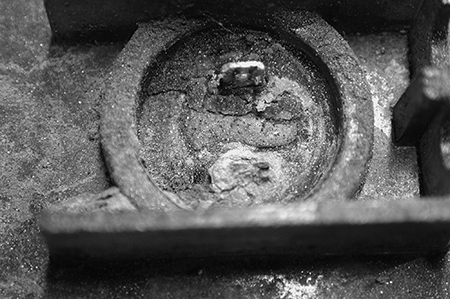
The lower terminal on this lamp became so badly corroded that it broke off.
Trailers run year-round in climates ranging from desert heat to sub-zero cold. Road salt, magnesium chloride, calcium chloride and similar chemicals coat trailer com- ponents as trucks plow through puddles of melt-water splashing corrosive mixtures on the lights, connectors and wiring. Eleven times more salt is put on the nation’s roads in a year than is used in seasoning and food preparation.
When salt water enters a wiring system through a cut, an abrasion or a faulty connection, it begins a process known as “salt creep.” The salt works its way along the wire and settles in critical junctions. Allowed to go unchecked, salt creep will eventually produce an intermittent defect or a total failure.

Vibration is a constant threat to truck and trailer lighting and wiring.
Vibration, often severe, is a constant threat as a trailer rolls along the road. Every component and all of the connections are constantly subjected to the pounding and loosening effects of vibration. Wiring connections are especially prone to damage from vibration.
Failure from abuse can be traced to a number of causes, but a few simple ones cause most of the problems. For instance, using a wire size too small for the task, such as supplying power to too many lights on a circuit, can cause substandard light output, overheating of the wiring or total failure.
Another common abuse of the wiring system is the use of numerous splices of smaller lengths instead of one piece of properly sized wire. Extra connections open the door to excess resistance, poor-quality connections and the failure of the circuit.

Too many splices, and splices with inadequate protection are a source of problems.
Another common problem is the failure to use appropriate protection for the connections and the wire itself. An example of this might be the failure to use shrink tubing to protect a splice from the elements or assembling system elements without using dielectric coating.
The effects of environment and abuse just get worse with time. One or two scrapes of a wire on a rough metal edge may not cause a failure. But a single trip over a typical highway could be enough to cause a grounded circuit and a lamp failure. Similarly, water and salt splashed on a connection once or twice may not cause immediate failure. However, constant exposure can accelerate the pace of damage so that one trip could easily cause salt creep and lead to the failure of a circuit.
Preparation For Installation, Repair & Troubleshooting
One of the most important factors in successfully installing, repairing and troubleshooting lights and wiring is quality workmanship. That means anticipating the require- ments of the job at hand and having everything needed before you start. The following is a short list of the things that will make your work easier and faster.
Tools
Many of the tools needed for working on wiring systems are ordinary hand tools. Side cutters and standard wire cutters are basic necessities for most wiring projects. Another indispensable wiring tool is a wire stripper for providing clean, accurate removal of insulation from the conductor. For disassembling wiring, installing new devices and tightening components loosened from vibration a good selection of screwdrivers is indispensable.

Wire Cutters
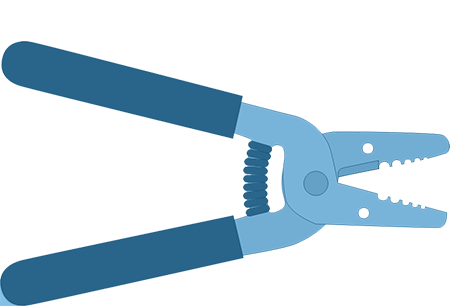
Wire Strippers
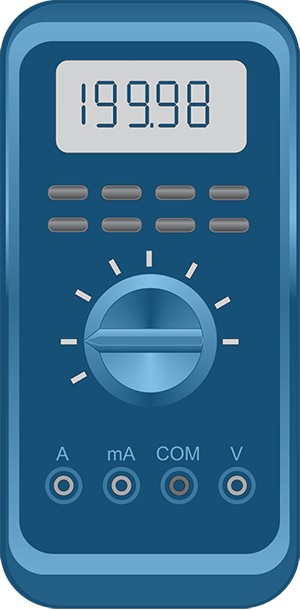
Digital Multimeter
For most installation and repair work where shrink tubing is to be used, a heat source is required to activate the tubing. The best tool is a heat gun. It provides heated air that can be easily directed to the connection. Some technicians prefer a butane torch for this task, although care must be exercised to avoid burning the tubing and wire insulation.
Another important tool category is testers. Every toolbox should have a continuity tester. It’s used to indicate whether a circuit is complete and unbroken. By testing sections of wire, it’s possible to isolate the source of the problem. The other common tester is the multi-meter. It functions as an ammeter measuring current flow, a voltmeter measuring volts and an ohmmeter measuring resistance in a circuit. Many multimeters also function as continuity testers.
A simple but necessary tool that’s a real asset on many jobs is a flashlight. Since vehicle wiring is frequently not readily accessible and in the shadows, a flashlight becomes a tool that technicians rely on, especially in the diagnostic phase. In a pinch a flashlight can be a continuity tester. Using a short length of wire, open the flashlight and connect it in series with circuit you’re testing.
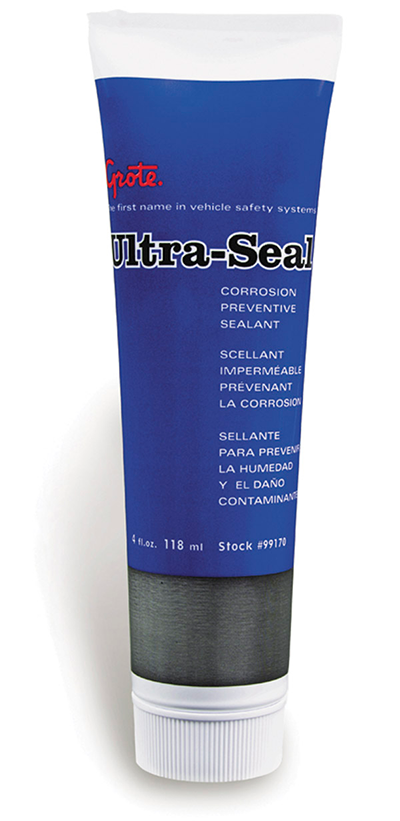
Dielectric coating is an indispensable product for anyone doing installation and repairs to lighting and wiring.
Supplies
In addition to the tools, gather the supplies required for the job. Dielectric coating is an indispensable product for anyone doing installation and repairs to lighting and wiring.
It’s applied to connections that are exposed to water and humidity. When applied, it keeps out moisture, extending the service life of the connections.
Shrink tubing is another item that offers substantial protection for connections and should be a basic item in wiring projects. By choosing the right type, shrink tubing can add mechanical strength to a connection, protection from contaminants or both.
Loom, flex tubing and spiral wrap provide convenient and effective means of containing and routing wires.
Similarly, wire ties and clamps are useful for securing wire and cables. Using these products will go a long way toward protecting wires that might otherwise become snagged or rub against sharp edges on the vehicle.
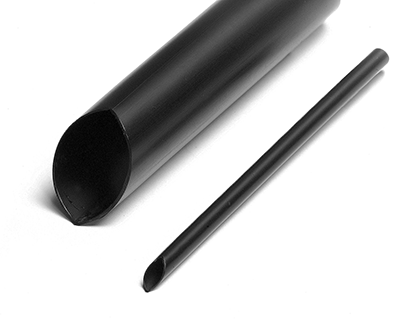
Shrink tubing comes in a wide variety of sizes.
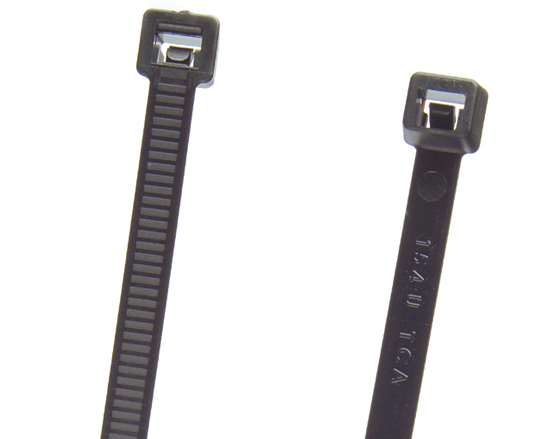
Wire ties in different colors can be used to color-code wire bundles.

Wire clamps in a variety of styles and materials hold wires securely in place while reducing flex and bounce from vibration.
In situations where wires must be replaced, make sure you use the right gauge. Remember, if you increase either the length of run or the load, you will also increase the resistance in the circuit and the amount of heat generated. In such cases, it may become necessary to use a larger gauge of wire.
The last category of supplies is electrical connectors. It’s important to have them on hand to replace all connectors removed from the vehicle. Used connectors can harbor corrosion. They may fit poorly causing inferior contact with the conductor and create excess resistance. Or they may simply fail due to age and allow the wires to disconnect.
Working Environment
Installing and repairing lighting and wiring should be done in an environment that minimizes contamination. A clean and well-organized work area makes it easier to keep tools and parts clean and free of water, dust, oil and grease.
And always take precautions to avoid injury. Wear safety eyewear and use gloves to protect against sharp edges. Always work in an environment that’s well lit so you can see wire markings, product identification numbers and other details.
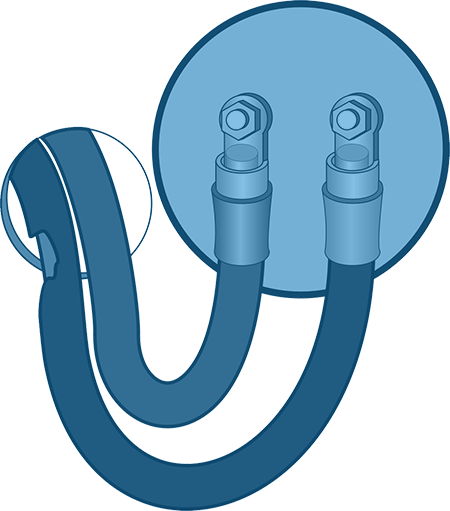
Visually inspect the truck for wires that are in contact with sharp areas of metal.
Inspect the Vehicle
A few minutes spent inspecting the vehicle can pay off in time saved in the repair or installation process. A quick walk around may offer clues as to what’s causing the reported failure as well as clues as to other potential problems. For example, visible dried and cracked insulation indicates the likelihood of a grounded or short circuit. Oil-soaked wiring is a sign that there may be deterioration of the insulation. Check all exposed harnesses and wiring, including the all-important battery cables.
Visually check the routing of the wiring. Look for wires that are in contact with sharp metal, and add protective grommets where they are missing. Also look for wires stretched tightly with no strain relief, a condition that may result in connections loosening up or separating completely.
Check for visible signs of damage to lighting devices. Cracks and abrasions indicate that even though the unit hasn’t failed, it may be providing substandard performance and be ready to fail at any moment. At the very least, damaged units ought to be inspected for signs of faulty mounting, broken lamps and damaged connections.
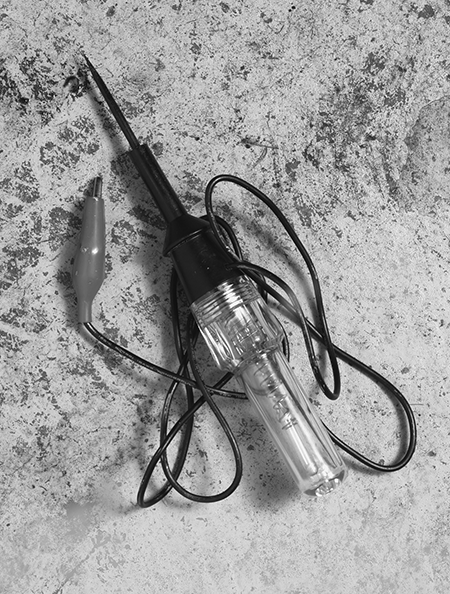
Never use the pointed tip of the tester to puncture the insulation on the wire you are testing.
Check for visible signs of corrosion buildup on all devices and connections. Even small deposits indicate the presence of corrosive salt and chemicals. The connections have probably become unsealed. Corrosion also suggests that contaminants have worked their way in through wires from a point where the insulation was cut or scraped open. In any case, the result is future failure.
Starting Installation or repair
Carefully hook up power to the trailer.
Make sure that you have all tools, testers and supplies ready. Never use the pointed tip of the tester to puncture the insulation on the wire you are testing. Even a tiny hole may allow the entrance of moisture and corrosive agents that can migrate from that point to other areas of the wiring assembly such as connections and splices or to the lighting devices themselves. Eventually that tiny hole can render the system inoperative.
Use the self assessment below to gauge your understanding of this section. Place your answer in the box and then check your answer by clicking on the “show answer” link.
Or, you can skip the assessment.
Instructions:
Read the question.
Place your answer in the box.
Example:
True or False:
You should read the questions and then type your answer into the box.
show answer
True!
Begin:
1. The E.A.T. principle refers to:
show answer
d) None of the above
2. True or False: Adding more lights to a circuit without increasing the wire gauge may cause a fire.
show answer
True
3. True or False: Unlike home wiring, vehicle wires are less prone to damage because they are visible and not contained in walls.
show answer
False
4. “Salt creep” refers to:
show answer
b) Salt that works it’s way inside a wire after entering at a cut, abrasion, or faulty connection.
5. True or False: Splicing several smaller pieces of wire in a circuit is better than a single length of wire.
show answer
False
6. True or False: It takes many years for the effects of time to damage the lights and wiring on a trailer.
show answer
False
7. The best tool for applying heat to shrink tubing is a:
show answer
b) Hot air heat gun
8. At the very least, a toolbox ought to have a:
show answer
c) Continuity tester
9. The principle thing to remember about wire gauge is:
show answer
d) All of the above
10. Connectors shouldn’t be re-used because they may:
show answer
d) All of the above
11. True or False: A coating of oil on wiring helps eliminate corrosion.
show answer
False
12. A walk around a tractor-trailer can often help indicate:
show answer
d) All of the above
13. True or False: An acceptable diagnostic technique is to use the pointed end of a continuity tester probe to puncture the insulation on a wire which makes testing faster and easier.
show answer
False